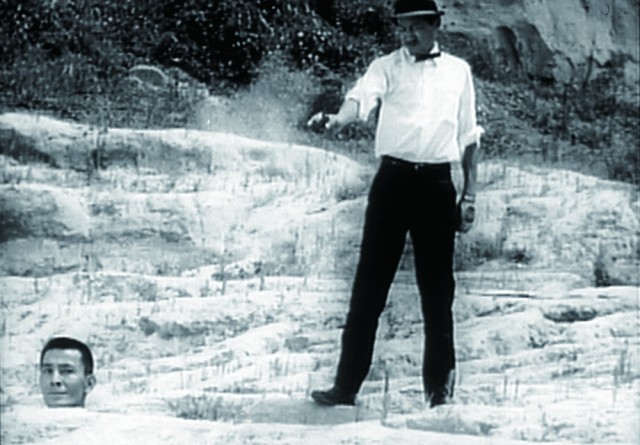
Atsushi Yamatoya’s cult pink film INFLATABLE SEX DOLL OF THE WASTELANDS features some mind-blowing visuals
INFLATABLE SEX DOLL OF THE WASTELANDS (KOYA NO DATCH WAIFU) (Atsushi Yamatoya, 1967)
Japan Society
333 East 47th St. at First Ave.
Saturday, October 18, 7:00
Festival runs monthly October 18 – February 20
212-715-1258
www.japansociety.org
 As if the title of Atsushi Yamatoya’s rarely shown 1967 cult flick wasn’t enough — it doesn’t get much better than Inflatable Sex Doll of the Wastelands — the fetishistic Japanese noir pink film has intriguing echoes of Welles’s Touch of Evil, Godard’s Alphaville, Marker’s La Jetée, Teshigahara’s Woman in the Dunes, and Dalí and Buñuel’s Un Chien Andalou. Yamatoya, who also directed Season of Betrayal, The Pistol That Sprouted Hair, and Trap of Lust and cowrote Branded to Kill (among many others), merges the crime genre with shaky, surreal flourishes courtesy of cameraman Hajime Kai, but the result is a violently misogynistic film that is often hard to watch, filled with rape, abuse, and impossible-to-decipher plot twists. In the middle of the desert, Naka (Masayoshi Nogami), a real estate agent, has hired Jō, a hitman (Yūichi Minato), to rescue his lover and employee, Sae (Noriko Tatsumi), and kill a gang of thugs who are sexually terrorizing her. Jō is soon facing his old enemy Kō (Shōhei Yamamoto) in a showdown that happens every day at three o’clock. There are enough phone calls and crawling ants to make Dalí proud, plenty of excess nudity, a great jazz score by Yōsuke Yamashita, and a hysterical moment that at first appears to be a still shot but turns out to be the characters trying to freeze, but it’s hard to get past the outright brutal treatment and victimization of every woman in the film. Inflatable Sex Doll of the Wastelands is screening October 18 at 7:00 at Japan Society, opening the series “The Dark Side of the Sun: John Zorn on Japanese Cinema,” and will be followed by a reception commemorating filmmaker Koji Wakamatsu, one of Yamatoya’s regular collaborators, who passed away in October 2012.
As if the title of Atsushi Yamatoya’s rarely shown 1967 cult flick wasn’t enough — it doesn’t get much better than Inflatable Sex Doll of the Wastelands — the fetishistic Japanese noir pink film has intriguing echoes of Welles’s Touch of Evil, Godard’s Alphaville, Marker’s La Jetée, Teshigahara’s Woman in the Dunes, and Dalí and Buñuel’s Un Chien Andalou. Yamatoya, who also directed Season of Betrayal, The Pistol That Sprouted Hair, and Trap of Lust and cowrote Branded to Kill (among many others), merges the crime genre with shaky, surreal flourishes courtesy of cameraman Hajime Kai, but the result is a violently misogynistic film that is often hard to watch, filled with rape, abuse, and impossible-to-decipher plot twists. In the middle of the desert, Naka (Masayoshi Nogami), a real estate agent, has hired Jō, a hitman (Yūichi Minato), to rescue his lover and employee, Sae (Noriko Tatsumi), and kill a gang of thugs who are sexually terrorizing her. Jō is soon facing his old enemy Kō (Shōhei Yamamoto) in a showdown that happens every day at three o’clock. There are enough phone calls and crawling ants to make Dalí proud, plenty of excess nudity, a great jazz score by Yōsuke Yamashita, and a hysterical moment that at first appears to be a still shot but turns out to be the characters trying to freeze, but it’s hard to get past the outright brutal treatment and victimization of every woman in the film. Inflatable Sex Doll of the Wastelands is screening October 18 at 7:00 at Japan Society, opening the series “The Dark Side of the Sun: John Zorn on Japanese Cinema,” and will be followed by a reception commemorating filmmaker Koji Wakamatsu, one of Yamatoya’s regular collaborators, who passed away in October 2012.
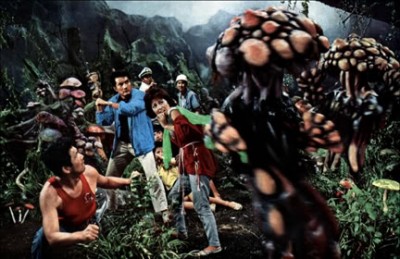
Japan Society series curated by John Zorn includes ATTACK OF THE MUSHROOM PEOPLE
The series, curated by electronic music pioneer John Zorn, continues once a month through February with Teinosuke Kinugasa’s Crossroads (with live shamisen accompaniment by Yumiko Tanaka), Yoshimitsu Morita’s Top Stripper, Ishiro Honda’s Attack of the Mushroom People, and the U.S. premiere of the made-for-television Nagisa Oshima’s It’s Me Here, Bellett, preceded by eight shorts by Osamu Tezuka. “I had been a huge fan of Japanese music, art, and film since the early 1960s, but late night Tokyo TV provided a peek into an entirely different world outside the classic art film masterpieces of Ozu, Mizoguchi, Kurosawa, and Inagaki,” Zorn explains in his curator statement. “It was a revelation to discover that Oshima’s Cruel Story of Youth and The Sun’s Burial were not so much an isolated vision but actually two examples of an entire cinematic genre, and that directors like Seijun Suzuki, Kinji Fukasaku, Toshio Masuda, Yasuzo Masumura, Teruo Ishii, and others had made incredible and uncompromising films that spoke as much about the Japanese psyche as origami, noh theater, or the tea ceremony ever had. . . . For me, the experimental, adventurous, and uncompromising side of any society is often the home of the deepest truths, and these films each hold their truths to an often uncomfortable extreme. I hope you enjoy the (occasionally blinding) intensity of ‘The Dark Side of the Sun.’”
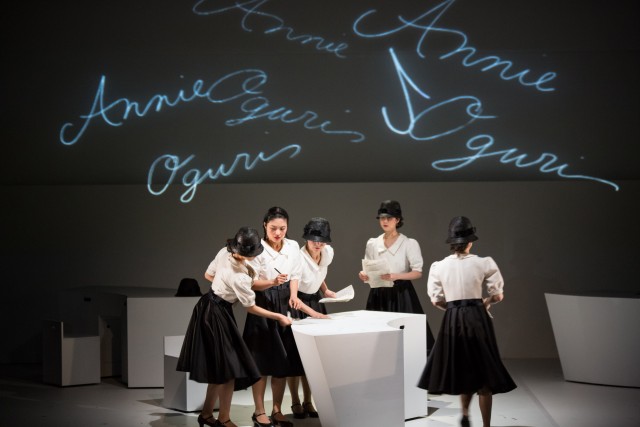
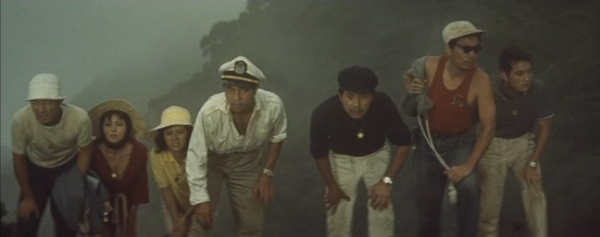
 How can you go wrong with a Japanese monster movie with such alternate titles as Attack of the Mushroom People and Fungus of Terror, directed by the man who gave us Godzilla, Rodan, Destroy All Monsters, and The Human Vapor? Well, you can’t. Ishirō Honda’s 1963 cult classic, Matango, is a postwar apocalyptic tale that evokes Lord of the Flies, The Thing, Invasion of the Body Snatchers, and Antonioni’s L’Avventura while predicting Lost and, yes, Gilligan’s Island. Written by frequent Honda collaborator Takeshi Shimura based on William Hope Hodgson’s 1907 short story “The Voice in the Night” (which was included in the 1958 compilation Alfred Hitchcock Presents: 12 Stories They Wouldn’t Let Me Do on TV), Matango also has its fair share of social commentary, as seven characters on a yachting outing end up stranded on a seemingly deserted island: the first mate, Senzô (Kenji Sahara), the skipper, Naoyuki (Hiroshi Koizumi), the wealthy Kasai (Yoshio Tsuchiya), the writer, Yoshida (Hiroshi Tachikawa), the sultry singer, Mami (Kumi Mizuno), the professor, Kenji (Akira Kubo), and the mousy Akiko (Miki Yashiro). Mushrooms are thriving on the island, but it’s best not to eat them, because they are not exactly the psychedelic fungi beloved by hippies in the mod movies of the ’60s. The film touches on jealousy, resentment, loneliness, hunger, and sanity in the nuclear age, with special effects (courtesy of Eiji Tsuburaya) that make the early years of Doctor Who — and Gilligan’s Island itself —seem like a technological marvel.
How can you go wrong with a Japanese monster movie with such alternate titles as Attack of the Mushroom People and Fungus of Terror, directed by the man who gave us Godzilla, Rodan, Destroy All Monsters, and The Human Vapor? Well, you can’t. Ishirō Honda’s 1963 cult classic, Matango, is a postwar apocalyptic tale that evokes Lord of the Flies, The Thing, Invasion of the Body Snatchers, and Antonioni’s L’Avventura while predicting Lost and, yes, Gilligan’s Island. Written by frequent Honda collaborator Takeshi Shimura based on William Hope Hodgson’s 1907 short story “The Voice in the Night” (which was included in the 1958 compilation Alfred Hitchcock Presents: 12 Stories They Wouldn’t Let Me Do on TV), Matango also has its fair share of social commentary, as seven characters on a yachting outing end up stranded on a seemingly deserted island: the first mate, Senzô (Kenji Sahara), the skipper, Naoyuki (Hiroshi Koizumi), the wealthy Kasai (Yoshio Tsuchiya), the writer, Yoshida (Hiroshi Tachikawa), the sultry singer, Mami (Kumi Mizuno), the professor, Kenji (Akira Kubo), and the mousy Akiko (Miki Yashiro). Mushrooms are thriving on the island, but it’s best not to eat them, because they are not exactly the psychedelic fungi beloved by hippies in the mod movies of the ’60s. The film touches on jealousy, resentment, loneliness, hunger, and sanity in the nuclear age, with special effects (courtesy of Eiji Tsuburaya) that make the early years of Doctor Who — and Gilligan’s Island itself —seem like a technological marvel.
 As if the title of Atsushi Yamatoya’s rarely shown 1967 cult flick wasn’t enough — it doesn’t get much better than Inflatable Sex Doll of the Wastelands — the fetishistic Japanese noir pink film has intriguing echoes of Welles’s Touch of Evil, Godard’s Alphaville, Marker’s La Jetée, Teshigahara’s Woman in the Dunes, and Dalí and Buñuel’s Un Chien Andalou. Yamatoya, who also directed Season of Betrayal, The Pistol That Sprouted Hair, and Trap of Lust and cowrote Branded to Kill (among many others), merges the crime genre with shaky, surreal flourishes courtesy of cameraman Hajime Kai, but the result is a violently misogynistic film that is often hard to watch, filled with rape, abuse, and impossible-to-decipher plot twists. In the middle of the desert, Naka (Masayoshi Nogami), a real estate agent, has hired Jō, a hitman (Yūichi Minato), to rescue his lover and employee, Sae (Noriko Tatsumi), and kill a gang of thugs who are sexually terrorizing her. Jō is soon facing his old enemy Kō (Shōhei Yamamoto) in a showdown that happens every day at three o’clock. There are enough phone calls and crawling ants to make Dalí proud, plenty of excess nudity, a great jazz score by Yōsuke Yamashita, and a hysterical moment that at first appears to be a still shot but turns out to be the characters trying to freeze, but it’s hard to get past the outright brutal treatment and victimization of every woman in the film. Inflatable Sex Doll of the Wastelands is screening October 18 at 7:00 at Japan Society, opening the series “The Dark Side of the Sun: John Zorn on Japanese Cinema,” and will be followed by a reception commemorating filmmaker Koji Wakamatsu, one of Yamatoya’s regular collaborators, who passed away in October 2012.
As if the title of Atsushi Yamatoya’s rarely shown 1967 cult flick wasn’t enough — it doesn’t get much better than Inflatable Sex Doll of the Wastelands — the fetishistic Japanese noir pink film has intriguing echoes of Welles’s Touch of Evil, Godard’s Alphaville, Marker’s La Jetée, Teshigahara’s Woman in the Dunes, and Dalí and Buñuel’s Un Chien Andalou. Yamatoya, who also directed Season of Betrayal, The Pistol That Sprouted Hair, and Trap of Lust and cowrote Branded to Kill (among many others), merges the crime genre with shaky, surreal flourishes courtesy of cameraman Hajime Kai, but the result is a violently misogynistic film that is often hard to watch, filled with rape, abuse, and impossible-to-decipher plot twists. In the middle of the desert, Naka (Masayoshi Nogami), a real estate agent, has hired Jō, a hitman (Yūichi Minato), to rescue his lover and employee, Sae (Noriko Tatsumi), and kill a gang of thugs who are sexually terrorizing her. Jō is soon facing his old enemy Kō (Shōhei Yamamoto) in a showdown that happens every day at three o’clock. There are enough phone calls and crawling ants to make Dalí proud, plenty of excess nudity, a great jazz score by Yōsuke Yamashita, and a hysterical moment that at first appears to be a still shot but turns out to be the characters trying to freeze, but it’s hard to get past the outright brutal treatment and victimization of every woman in the film. Inflatable Sex Doll of the Wastelands is screening October 18 at 7:00 at Japan Society, opening the series “The Dark Side of the Sun: John Zorn on Japanese Cinema,” and will be followed by a reception commemorating filmmaker Koji Wakamatsu, one of Yamatoya’s regular collaborators, who passed away in October 2012.
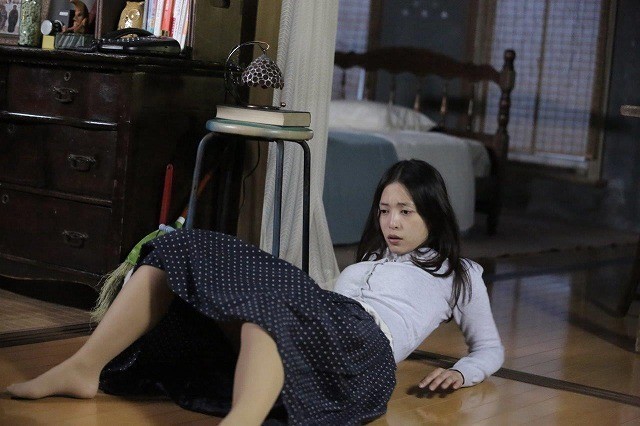
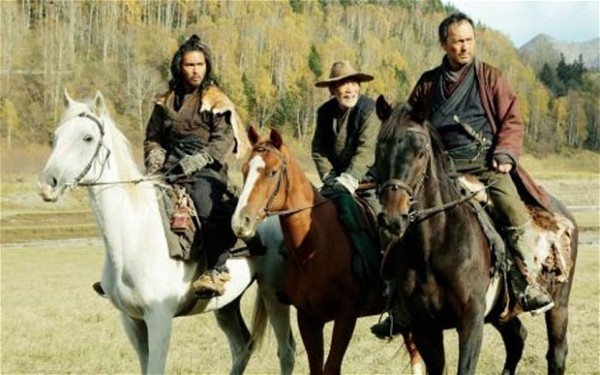
 For more than half a century, Hollywood has remade a plethora of Asian films, from The Magnificent Seven (Seven Samurai) to The Departed (Infernal Affairs), from Shall We Dance? (Sharu wi Dansu?) to The Grudge (Ju-On), among so many others. But there’s a relatively new trend in which Japan, Korea, and China are now remaking American films, including Ghost: Mouichido Dakishimetai (Ghost), Wo Zhi Nv Ren Xin (What Women Want), and Saidoweizu (Sideways). One of the latest, and best, is Japanese-born Korean director Lee Sang-il’s spectacularly honest and faithful remake of Clint Eastwood’s 1992 Oscar-winning revisionist Western, Unforgiven — in some ways returning the favor of Eastwood’s having starred in Sergio Leone’s 1964 spaghetti Western A Fistful of Dollars, a remake of Akira Kurosawa’s Yojimbo. In Unforgiven, Ken Watanabe, who was nominated for an Academy Award for his performance in The Last Samurai and starred in Eastwood’s Letters from Iwo Jima, plays Jubei Kamata, the Japanese version of Eastwood’s William Munny.
For more than half a century, Hollywood has remade a plethora of Asian films, from The Magnificent Seven (Seven Samurai) to The Departed (Infernal Affairs), from Shall We Dance? (Sharu wi Dansu?) to The Grudge (Ju-On), among so many others. But there’s a relatively new trend in which Japan, Korea, and China are now remaking American films, including Ghost: Mouichido Dakishimetai (Ghost), Wo Zhi Nv Ren Xin (What Women Want), and Saidoweizu (Sideways). One of the latest, and best, is Japanese-born Korean director Lee Sang-il’s spectacularly honest and faithful remake of Clint Eastwood’s 1992 Oscar-winning revisionist Western, Unforgiven — in some ways returning the favor of Eastwood’s having starred in Sergio Leone’s 1964 spaghetti Western A Fistful of Dollars, a remake of Akira Kurosawa’s Yojimbo. In Unforgiven, Ken Watanabe, who was nominated for an Academy Award for his performance in The Last Samurai and starred in Eastwood’s Letters from Iwo Jima, plays Jubei Kamata, the Japanese version of Eastwood’s William Munny.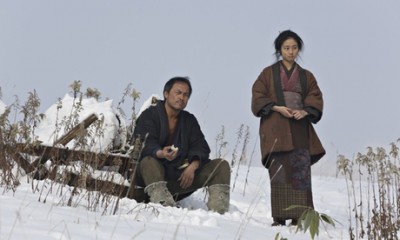
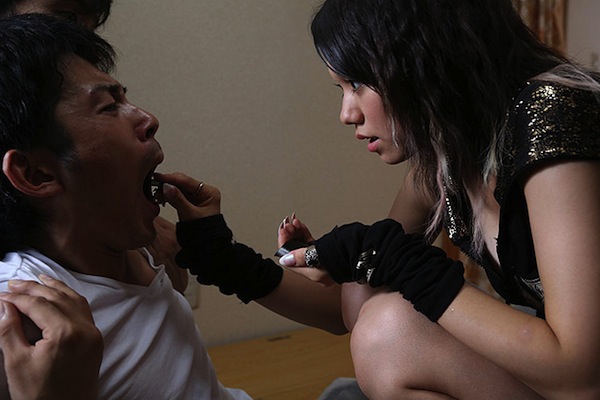
 It might take a while for the two seemingly disparate narratives to come together in Sion Sono’s totally awesome
It might take a while for the two seemingly disparate narratives to come together in Sion Sono’s totally awesome